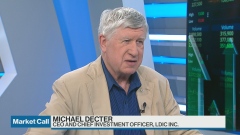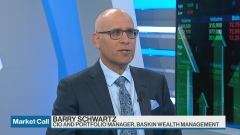1h ago
Gloom Returns to China Markets as Stimulus Trade Fizzles Out
, Bloomberg News
(Bloomberg) -- Losses in Chinese assets are mounting again as Beijing’s modest stimulus disheartens investors.
The Hang Seng China Enterprises Index of Hong Kong-listed Chinese companies gauge slumped more than 6% in four sessions, capped its steepest weekly drop since March. The CSI 300 Index of mainland shares fell 2.5% through Wednesday before markets closed for holidays. The yuan also tumbled to the weakest since November, with analysts bracing for more declines.
Gloom is setting in after authorities refrained from adding major policy support even as the economy has lost momentum. Beijing is making it clear that any easing will be targeted and measured, bidding farewell to the days of massive stimulus that drove leveraged buying and inflated asset prices — a distortion that the nation’s leaders are determined not to repeat.
“This is an expectation mismatch in my opinion,” said Zhikai Chen, head of Asian and global emerging-market equities at BNP Paribas Asset Management. “It is a very awkward situation where positioning is light, valuation is undemanding yet sentiment is very bearish.”
An analysis by Morgan Stanley’s quantitative team shows active long-only managers have remained net sellers of China’s growth and tech stocks in May and June. Meanwhile, hedge funds have been adding bearish bets as outstanding short positions by the cohort jumped 32% in June, they found.
To be sure, China has been rolling out measures to stimulate its economy, including a series of reductions in interest rates and extended tax breaks for consumers buying clean cars. Market reactions have been muted as traders are skeptical whether such measures will reinvigorate an economy weighed down by record debt levels, slowing global demand, and weak confidence among businesses and consumers rattled by years of unpredictable policy shifts.
“It is telling that the market has been unable to put up a sustained rally year-to-date despite policy easing,” said Eli Lee, head of investment strategy at Bank of Singapore Ltd. “The incremental easing approach taken by policymakers, as they remain determined to curtail the long-term rise of leverage in the economy, may not move the needle.”
That’s not to say bulls are giving up. Goldman Sachs Group Inc. strategists including Kinger Lau said a tactical trading window for Chinese stocks is “open once again,” given inexpensive valuations, according to a June 19 note. The strategists recommended buying policy-easing beneficiaries, as well as artificial intelligence themes and state-owned companies. The MSCI China Index is trading at 10.1 times forward earnings, below the five-year average of around 12.1.
“There’s a lot of negativity but I think a lot of it is built into the price already,” Ken Peng, head of Asia Pacific investment strategy at Citi Global Wealth Investments, said in a press briefing this week. “The prospect of better growth in the second half is there, but it’s coming at a much more gradual pace.”
Expectations for some sort of stimulus remain, likely after the July meeting of the Communist Party’s Politburo, where economic policy will be discussed. Some analysts say a weak yuan, currently tolerated by Beijing, can be a form of monetary easing to shore up export demand.
Until the next major stimulus, if any, traders will be focusing on the darkening outlook for China’s economy and corporate earnings. JPMorgan Chase & Co., UBS Group AG, Standard Chartered Plc and Citigroup Inc. have recently trimmed their 2023 gross domestic product growth forecasts to 5.5% or lower as official figures for exports and credit expansion to retail sales undershot expectations.
“The flows, the sentiment, the margin tradings, they are all at fairly bearish level,” Bank of America Corp.’s strategist Winnie Wu said on Bloomberg TV on Friday. With liquidity abundant, “theoretically there is good basis for a trading bounce, but it might just be a trading bounce if we don’t get fundamental support,” she added.
--With assistance from Ishika Mookerjee, Chester Yung and Nurin Sofia.
©2023 Bloomberg L.P.





